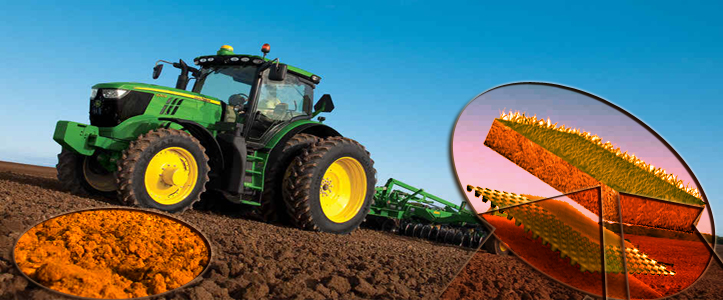Best
Soil-crop management

Organic matter (humus) is
the major part of soils; it must comprise of 3% weight age
in soil.Unfortunately in Punjab soils, it reduces to less
than 1%. Farmers applied heavy dose of synthetic fertilizers
to exhaustive crops (Sugarcane, Maize & Rice) to get maximum
returns that cause severe effects on soil structure and high
soil pH. Farm yard manure, green manure and poultry manure
are the least preference from farmerís side now.
Most farmers outline that
restorative crops and legumes can capture nitrogen from the
air, so they shouldnít apply manure. Now soils are usually
deficient of many micro elements like boron, iron and zinc.
In this case manure is
considered a good source of all these nutrients in balanced
form.A crop requires a high nutrient need, phosphorus,
potassium and sulfur, and micronutrients such as boron and
iron for bumper production.
Restorative crops like alfalfa, soybean and other legumes
can use nitrogen from the air with the assistance of
rhizobia bacteria that live in the nodules on their roots;
the plant will take available nitrogen out of the soil
first.
This means legumes can help
keep excess soil nitrogen in check and reduce the potential
for nitrate leaching. Major sources of manures are:
1. Cattle shed wastes-dung, urine and slurry from biogas
plants.
2. Town refuse, sewage, sludge and sullage.
3. Poultry Jitter, droppings of sheep and goat.
4. Slaughterhouse wastes-bone meal, meat meal, blood meal,
horn and hoof meal, Fish wastes.
5. Byproducts of agro industries-oil cakes, bagasse and
press mud, fruit and vegetable processing wastes etc.
6. Crop wastes-sugarcane trash, stubbles and other related
material.
7. Dry weeds and tank silt.
8. Green manure crops and green leaf manure material.
There are three general manure application strategies or
times of application: pre-plant (apply before seeding),
top-dressing on established alfalfa and following last
harvest at termination of the stand.
Applying manure before plantation show good
results. Pre-plant manure application will provide the most
benefit on low-fertility soils. Usually experts recommend
manure application in empty fields at the end of summer or
monsoon season. Main advantage of applying fertilizer in
that season is
a) Low temperature (slow down decomposition)
b) Minimum rain fall (Leach down of nutritionís)
c) Available in field for long time
d) No stress affect to plants
e) Minimum weeds growth
Yields from manure are sometimes even greater than
those from potassium and phosphorus commercial fertilizer,
perhaps because of other manure nutrients (sulfur,
micronutrients) or soil physical or microbial
effects.
Top-dressing is the second method to spread manure
in field but not considered good in standing crops, however
give good responses in grassy lawns. Top dressing in high
temperature or in
suffocated weather can be harmful for the crop due to heat
stress.
The third application strategy is to apply manure
following the last harvest at termination of the legume or
grass stand (before plough down). This timing avoids any
possible damage to the perennial forage crop. But, he said,
it is important to limit application rates to the nitrogen
need of the succeeding crop, accounting for both manure N
and legume credit.
In case of Rhodes grass.and Alfalfa fodder in Punjab, last
cut is almost harvested in November. Perennial crops usually
remain in field for many years, so mostly in 2nd & 3 rd
year, crop plant nutritionís lose down to many folds with
passage of every cuts.
Recommendations
1. Manure can carry pathogens, several protozoa and weed
seeds. To minimize these concerns, experts encouraged
spreading manure as soon after harvesting a crop as
possible.
In new field, spread manure nearly two weeks before sowing.
It gives immense time to grow all weeds before sowing and
overcome the costing of herbicides.
2. Due to utilization of synthetic same chemical fertilizer
for long run, salinity is going a giant concern. To defeat
this, manure application every year is obligatory to
maintain the soil pH.
3. Salt affected land show good results by applying manure
regularly.
4. Improve soil physical properties like structure, water
holding capacity
5. Plant parasitic nematodes and fungi are controlled to
some extent by altering the balance of microorganisms in the
soil
6. Carbon dioxide released during decomposition acts as a
CO2 fertilizer
7. Gypsum is applied to reclaim the salt affected soils
before manure application.
May 2015
By Muhammad Salman Naeem
Source: Pakissan
Team